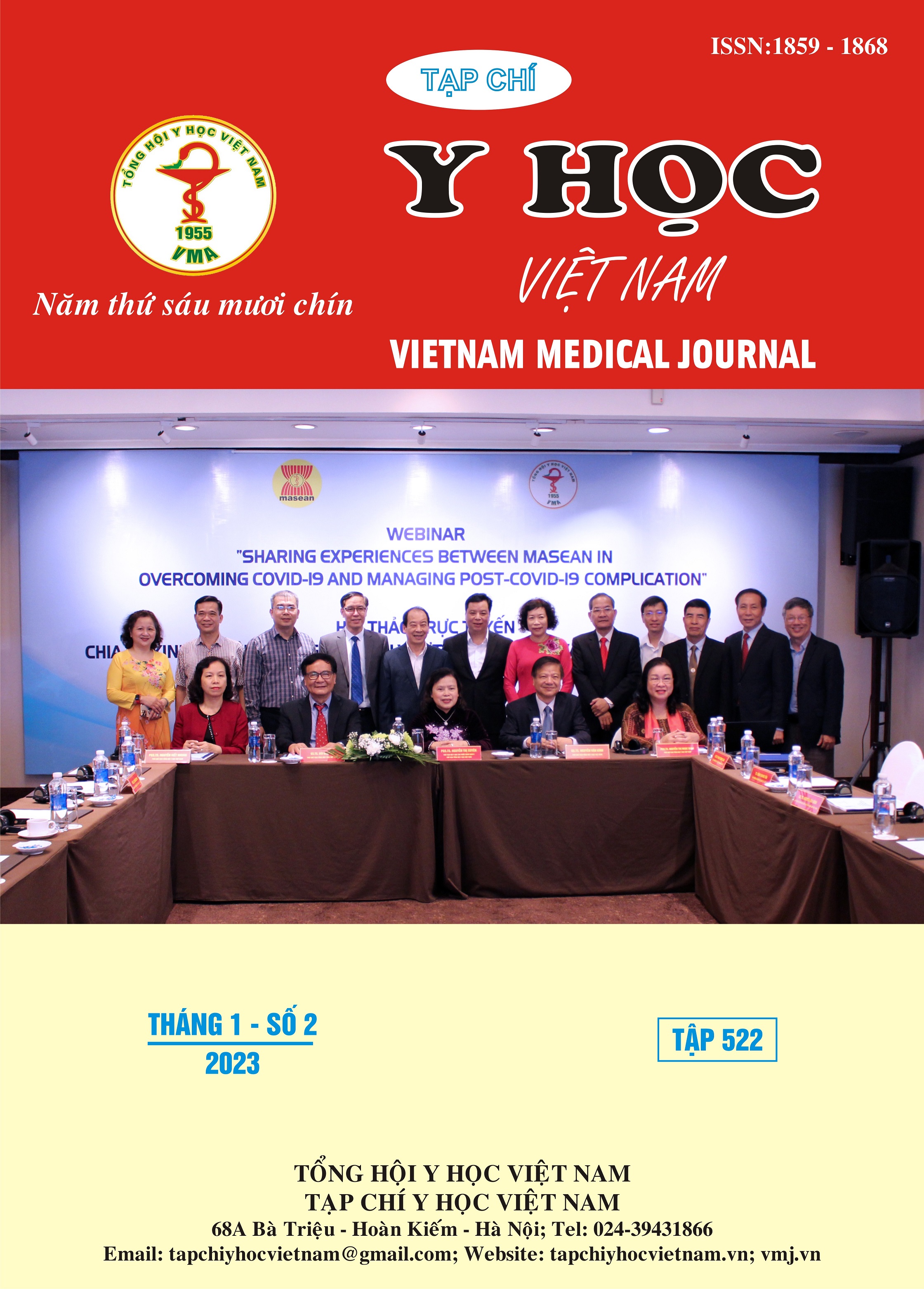CLINICAL, SUBCLINICAL FEATURES OF SLEEP APNEA SYNDROME IN PATIENTS WITH TYPE 2 DIABETES MELLITUS
Main Article Content
Abstract
Objectives: To describe clinical and subclinical characteristics of sleep apnea syndrome (SAS) in patients with type 2 diabetes mellitus (T2DM). Subject and methods: A descriptive cross-sectional study in 69 patients with type 2 diabetes mellitus measured as polysomnograms or ventilatory polygraphy at Bach Mai Hospital. Results: Sleep apnea syndrome was present in 85,5% of patients with type 2 diabetes mellitus. BMI was higher in the diabetic group with sleep apnea syndrome than in the group without sleep apnea. The STOP-BANG and Epworth screening scores were higher in the patients with sleep apnea syndrome group with p<0,05. There was no difference in HbA1c and fasting glucose between the two groups of patients. In the group of patients with type 2 diabetes mellitus with SAS, the mean apnoea/hypopnoea index (AHI) was 33,8±25 and the oxygen desaturation index (ODI) was 39 ± 31,2, which were higher than those without sleep apnea syndrome with p<0,05. Besides, the statistically significant difference (p < 0,05) in the lowest SpO2 index in the two patients studied was also higher in the group with sleep apnea syndrome. The lowest SpO2 value in the group of type 2 diabetes with sleep apnea was statistically significantly lower than the group without sleep apnea. Conclusions: Sleep apnea syndrome is common in patients with type 2 diabetes. STOP-BANG and Epworth are effective tools to screen for sleep apnea syndrome among patients with type 2 diabetes.
Article Details
Keywords
Sleep apnea syndrome, Type 2 diabetes mellitus, AHI, HbA1C, Fasting glucose, ODI, STOP-BANG, Epworth.
References
2. Harsch IA, Hahn EG, Konturek PC. Insulin resistance and other metabolic aspects of the obstructive sleep apnea syndrome. Med Sci Monit Int Med J Exp Clin Res. 2005;11(3):RA70-75.
3. Strausz S, Havulinna AS, Tuomi T, et al. Obstructive sleep apnoea and the risk for coronary heart disease and type 2 diabetes: a longitudinal population-based study in Finland. BMJ Open. 2018;8(10):e022752. doi:10.1136/bmjopen-2018-022752
4. Foster GD, Sanders MH, Millman R, et al. Obstructive sleep apnea among obese patients with type 2 diabetes. Diabetes Care. 2009;32(6):1017-1019. doi:10.2337/dc08-1776
5. Tufik S, Santos-Silva R, Taddei JA, Bittencourt LRA. Obstructive Sleep Apnea Syndrome in the Sao Paulo Epidemiologic Sleep Study. Sleep Med. 2010;11(5):441-446. doi: 10.1016/j.sleep.2009.10.005
6. Barcelo A, Pierola J, de la Pena M, et al. Free fatty acids and the metabolic syndrome in patients with obstructive sleep apnoea. Eur Respir J. 2011; 37(6):1418-1423. doi:10.1183/09031936.00050410
7. Teng Y, Wang S, Wang N, Li M. STOP-Bang questionnaire screening for obstructive sleep apnea among Chinese patients with type 2 diabetes mellitus. Arch Med Sci. 2018;14(5):971-978. doi:10.5114/aoms.2018.73984
8. Rusu A, Bala CG, Craciun AE, Roman G. HbA1c levels are associated with severity of hypoxemia and not with apnea hypopnea index in patients with type 2 diabetes: Results from a cross-sectional study. J Diabetes. 2017;9(6):555-561. doi:10.1111/1753-0407.12452


